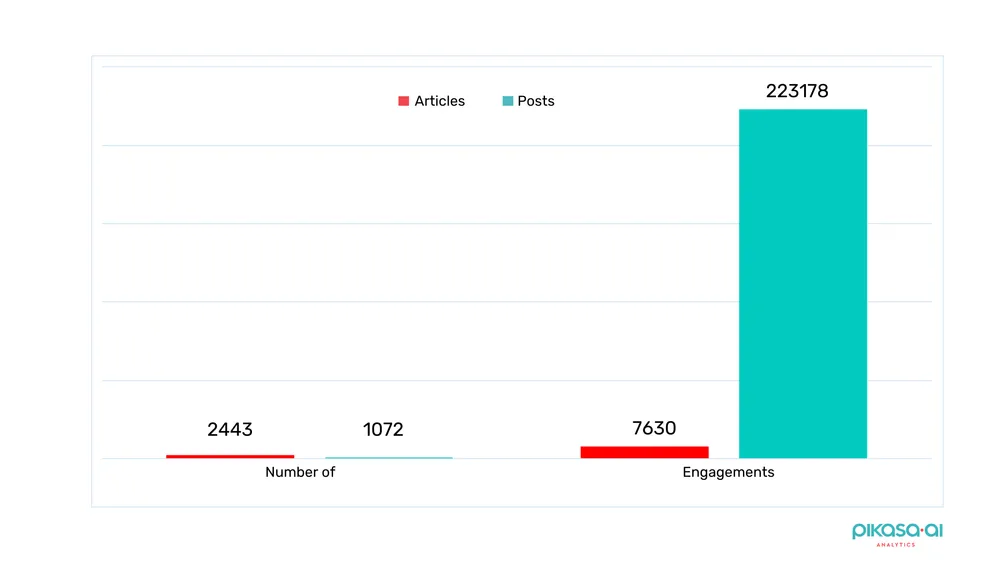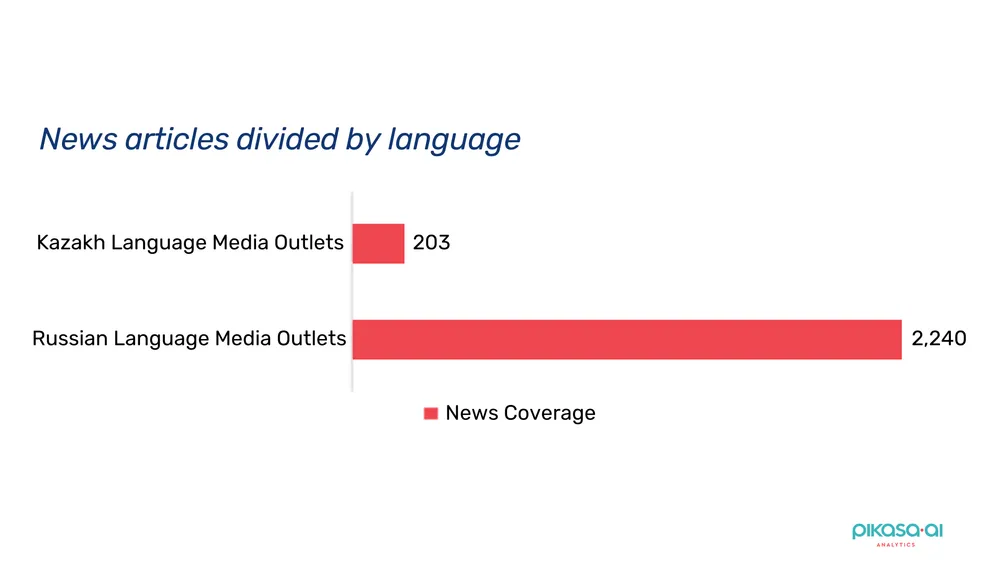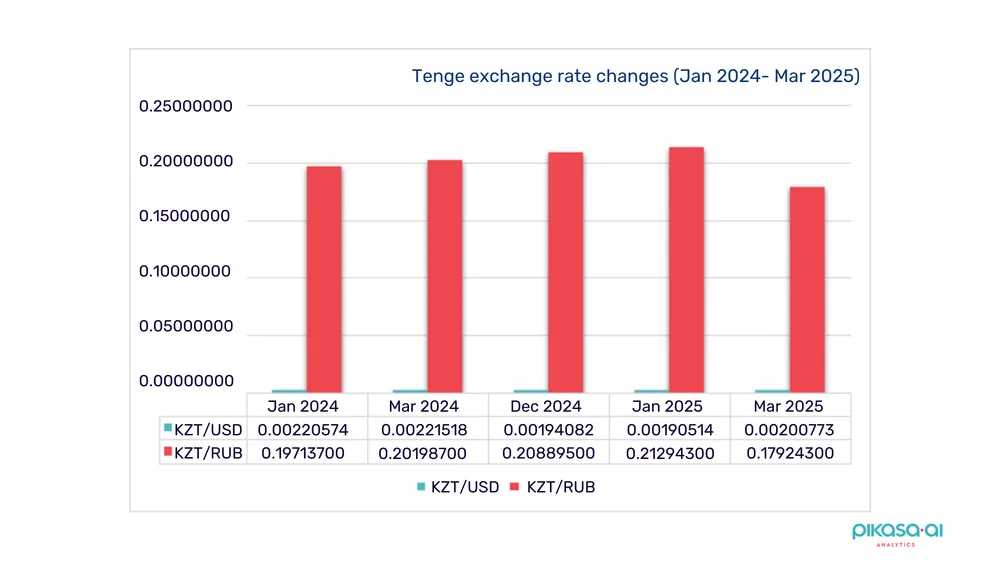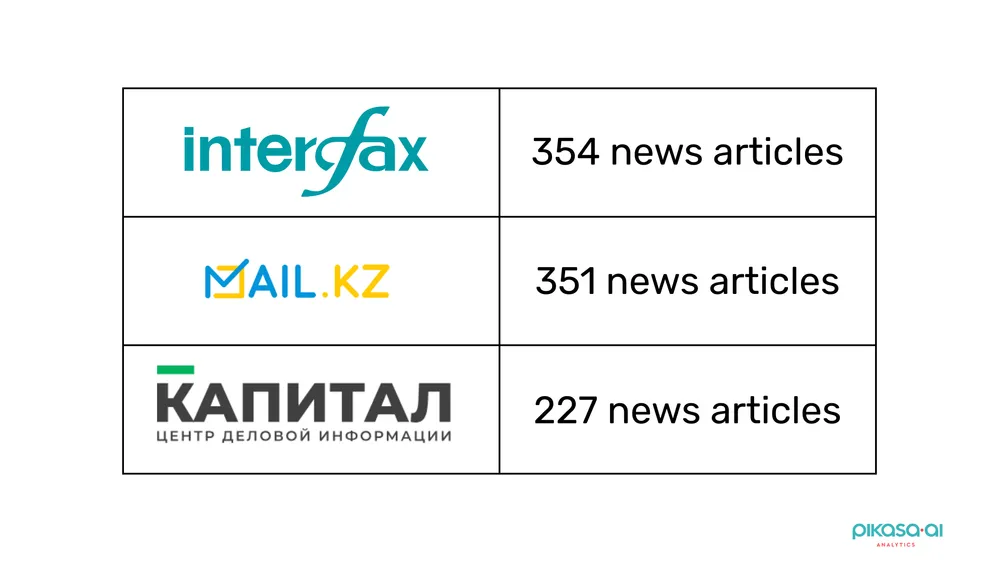The devaluation of Kazakhstan's national currency, the tenge, has been a recurring concern, particularly in the context of global economic shifts and regional dependencies. In early 2025, fluctuations in the tenge’s exchange rate were closely linked to external economic factors, particularly the volatility of the Russian ruble. This case study analyzes media coverage and social media discussions surrounding the devaluation of the tenge, highlighting differences in reporting across Kazakh and Russian language media outlets, as well as public sentiment on digital platforms.
Media and Social Media Coverage
Media coverage of the tenge devaluation included 2,443 articles and 1,072 social media posts. While traditional media primarily focused on expert opinions and macroeconomic analyses, social media platforms saw significantly higher public engagement. Articles generated 7,630 interactions, whereas social media posts accumulated an overwhelming 223,178 engagements, reflecting the public’s heightened concern and active discussion online. This disparity highlights the growing influence of digital platforms in shaping public discourse on economic issues.

Figure 1: Analyzed period 01.01.2025-19.03.2025
Language and Audience: Kazakh vs. Russian Language Outlets
Kazakh-language articles primarily target a local audience, addressing concerns relevant to Kazakhstan’s domestic economy. Russian-language media, on the other hand, caters to a broader audience, including Russian-speaking Kazakhs and international readers who may require more in-depth context and analysis.

Figure 2: News articles divided by language
Content and Economic Analysis
While both Kazakh and Russian news outlets report on key economic indicators such as the dollar exchange rate, government policies, and National Bank interventions, Russian-language articles tend to provide more detailed macroeconomic perspectives. They frequently reference global economic trends, oil prices, and geopolitical tensions to explain the tenge’s instability.
Government and Policy Reporting
Both Kazakh and Russian articles cover government responses, but Russian-language pieces tend to include a deeper analysis of monetary policies and interventions by the National Bank of Kazakhstan. Kazakh-language articles often take a more direct and straightforward approach, emphasizing local economic concerns.

The exchange rate data is based on information from BCC.kz, DKNews.kz, and the National Bank of Kazakhstan, with estimated values for KZT/ RUB exchange rates based on historical trends and their correlation with KZT/ USD movements.
Most Active Media Outlets on this Topic:

Social Media Narratives and Public Sentiment
Tone of Social Media Discussions
Social media discussions around the ruble and tenge in Kazakhstan largely reflect cautious and concerned sentiments. Users frequently discuss economic instability, inflation fears, and skepticism toward government interventions.
Key Social Media Themes
-
Economic Interdependence with Russia: Many posts highlights how Kazakhstan’s economy is closely tied to Russia’s, with fluctuations in the ruble affecting the tenge’s value.
-
Geopolitical Factors: Political developments, such as international sanctions on Russia, are widely discussed as indirect causes of currency fluctuations in Kazakhstan.
-
Government Response Criticism: Many users express dissatisfaction with how the National Bank and government handle currency devaluation, advocating for more effective policies to stabilize the tenge.
The devaluation of the tenge in early 2025 sparked widespread discussion across traditional and social media. While news articles provided in-depth analysis of economic trends and government responses, social media reflected public concerns about inflation and economic stability. The close economic relationship between Kazakhstan and Russia remains a significant factor influencing the tenge’s value, making external geopolitical and economic events key drivers of currency fluctuations.
Written by
Sara Lukarevska
March 28, 2025